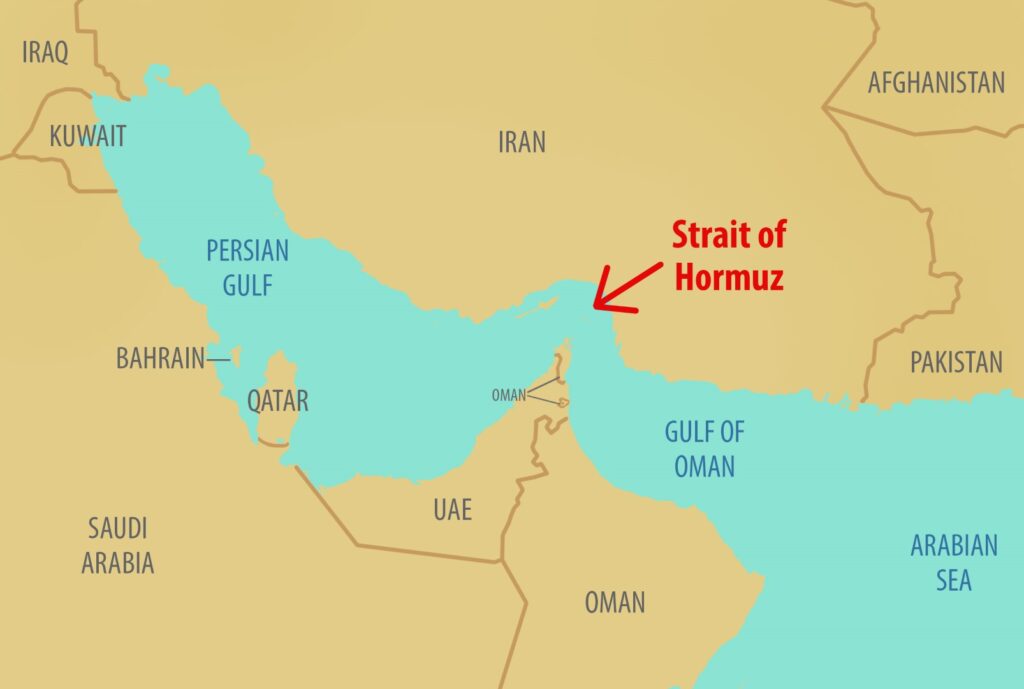
Seafarers who are subject to an attack in the zone are entitled to a bonus and doubled death and disability compensation, according to the International Bargaining Forum (IBF)
It’s the only sea route to transport cargo from the oil-rich countries of the Persian Gulf to the rest of the world. Yet the Strait of Hormuz remains in the centre of rising tension in the region that has affected the oil trade.
Shipowners and seafarers concerned have consequently braced for the danger their ships face while in transit to the narrow shipping route, which has been designated a “temporary extended risk zone.” This means that seafarers who are subject to an attack in the zone, according to the International Bargaining Forum (IBF), “are entitled to a bonus and doubled death and disability compensation.”
The waterway gained the designation following tanker attacks in the Gulf of Oman, including Iran’s seizure of the UK-flagged oil tanker Stena Impero in July. The IBF’s Warlike Operations Areas Committee (WOAC) came up with the designation as it monitors the risk to shipping in the region. The Swedish-owned Impero, which has a multinational crew, appears to have been detained illegally while transiting the Strait.
The IBF brings together the ITF and maritime employers, including ship owners and managers. The forum was launched with the International Maritime Employers’ Council (IMEC) and International Mariners Management Association of Japan (IMMAJ), and later expanded by adding Korean Shipowners’ Association (KSA).
Speaking at the conclusion of the talks, the Joint Negotiating Group’s (JNG) Chairman Captain Koichi Akamine said, “These discussions were never going to be easy. After the initial attacks in the Gulf of Oman in May and June, one may feel the need to act quickly to designate a risk area. However, it is important in such events to step back and assess the real threat to shipping and the most appropriate measures to take. The JNG is confident that it has now introduced a designation which properly addresses concerns by seafarers transiting the Strait.”
The IMEC Chairman Capt. Belal Ahmed added, “The Strait of Hormuz is a key shipping route, not just for the oil tankers in the forefront of current media focus, but also, for example, container ships on transit to Jebel Ali and beyond. As an employers’ association, it was important for us to reassure seafarers who may be at additional risk in the area. We would urge the responsible parties to expedite the release of the held seafarers.”
The ITF Seafarers’ Section Chair David Heindel said, “These are trying times for the industry and seafarers in particular, who are simply trying to provide income for their families. While this is a sensitive political issue and today has only affected tankers and potentially British flagged vessels, it was our desire that the IBF show leadership and move quickly to reflect the concerns of the seafarers transiting this region.
“I am pleased that our partners have responded positively to our request to reflect the potential risks that exist for all ships and all seafarers transiting the Strait of Hormuz at this time,” Heindel said, adding that “We continue to call for calm in the area and the release of the crew.”
The new Extended Risk Zone is defined by the following coordinates but excludes three nautical miles off the main coastlines of the United Arab Emirates, Oman and Iran:
- On the West: A line joining Ra’s-e Dastakan (26°33’N – 55°17’E) in Iran, southward to Jaztal Hamra lighthouse (25°44’N – 55°48’E), in the United Arab Emirates (the common limit with the Persian Gulf).
- On the East: A line joining Ra’s Līmah (25°57’N – 56°28’E), in Oman, eastward to Ra’s al Kūh (25°48’N – 57°18’E), in Iran (the common limit with the Arabian Sea).
About 25% of the world’s oil, nearly 21 million barrels a day, passed through the Strait of Hormuz last year. The US Energy Information Agency says the Strait of Hormuz was the world’s busiest sea route for oil in 2016, carrying about 19 million barrels a day – more than the 16 million bpd that went through the Strait of Malacca. SF







